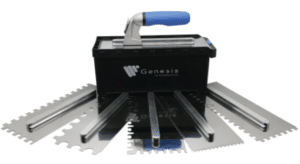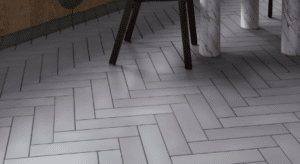The latest iteration of The British Standard for Wall & Floor Tiling 5385 has now been published as part of the 5 year standards review. The regulation considers changes within tiling and the wider construction industry to ensure the highest safety standards are maintained. One of the biggest changes to the standard appears in Part 1 and relates to the suitability of certain materials to be used as backing materials for the adhesion of wall tiles.
The previous version of this standard, released in 2009, states:
The use of sheets or boards that are subject to movement from changes in moisture content should be avoided if at all possible. If such boards (plywood board, chipboard, some fibre building boards) have to be used, they should be restricted to small areas and installed in such a way that they provide a dimensionally stable and rigid background.
This rule has become much tighter in the new legislation, and such backing materials are now strictly prohibited. Boards such as plywood are prone to dimensional changes from exposure to different environmental conditions, such as moisture or temperature. For this reason, they cannot be trusted to maintain a consistent platform upon which tiles can be fixed, potentially leading to tile damage, and even tiles becoming separated from the board and coming loose, maybe even falling from the wall with the possibility of causing injury.
The new standard explains this with the wording:
The use of sheets or boards that are subject to movement from changes in moisture content should be avoided. Plywood and other wood-based sheets or boards should not be used for direct tiling.
The reason for this change of stance is linked to the quality of general purpose wooden board (plywood board, chipboard, etc.) currently in the market. The construction market is now more saturated with cheaper and thinner imported boards, which are more prone to dimensional changes.
The best way around this new rule is ensuring you use tile backer boards instead, which are manufactured to extremely high standards and permitted under the new legislation. All of our showrooms stock Marmox Boards and BAL Board, a water & mould resistant tile backer board that is capable of holding up to 100kg/m2.
For any more information about the new legislation, or if you need to pick up some suitable backer boards, visit your nearest Tile & Stone Gallery showroom.
Find Your Nearest ShowroomReturn To Inspiration






